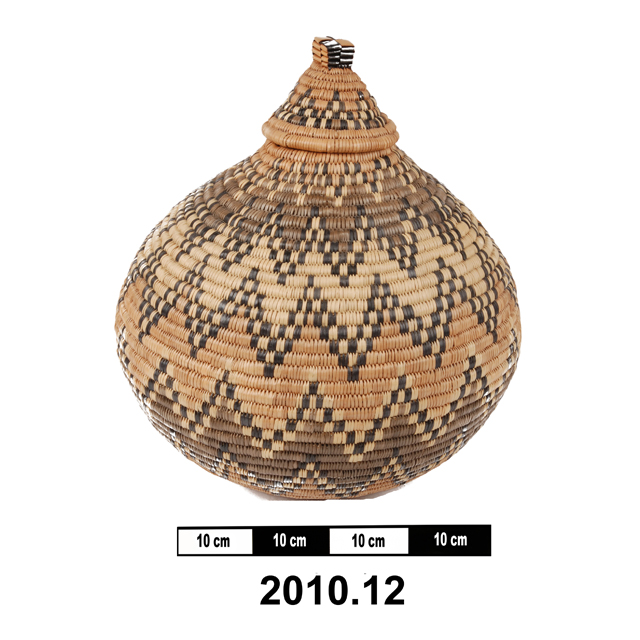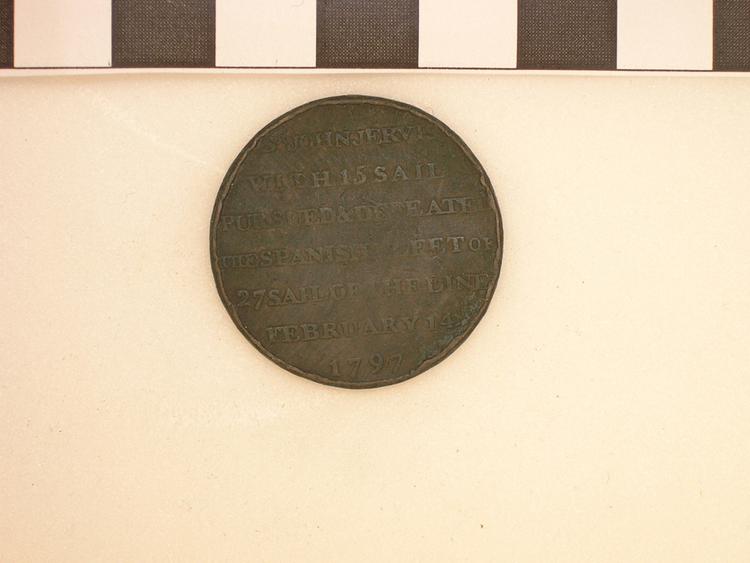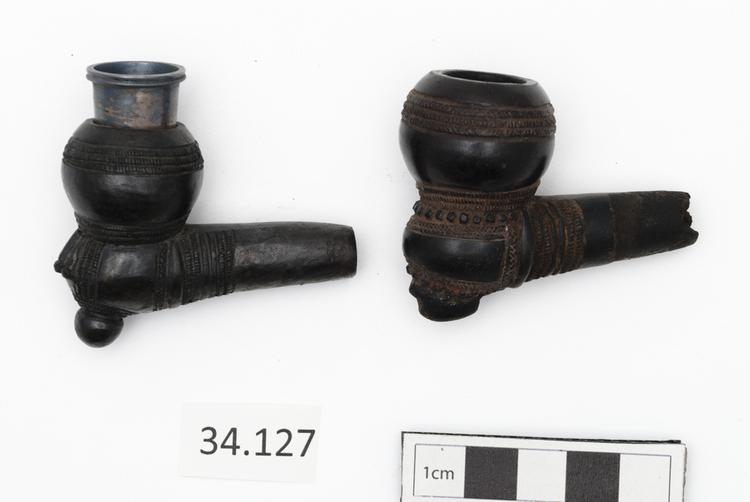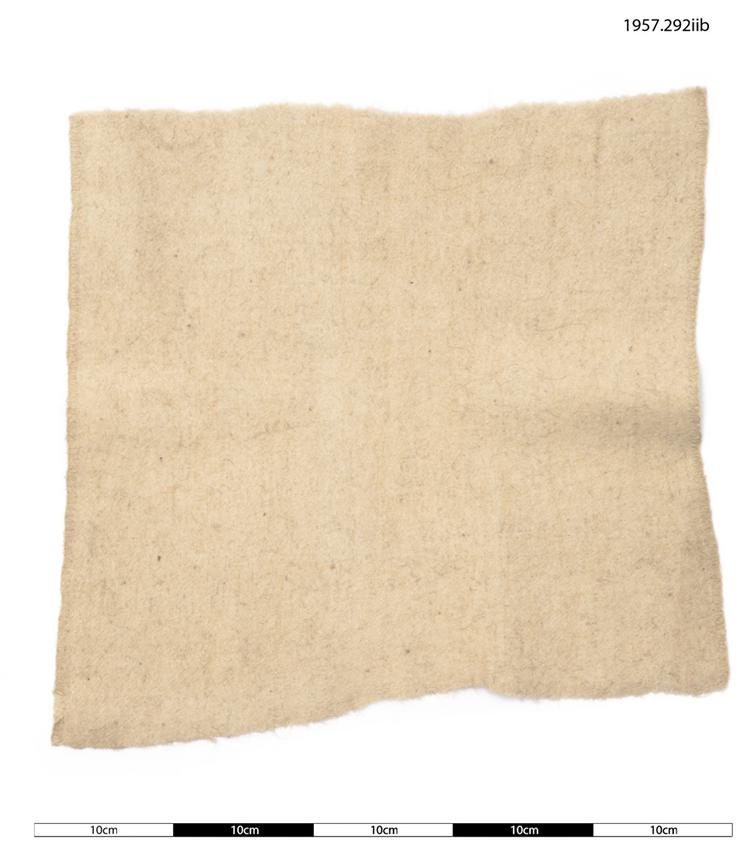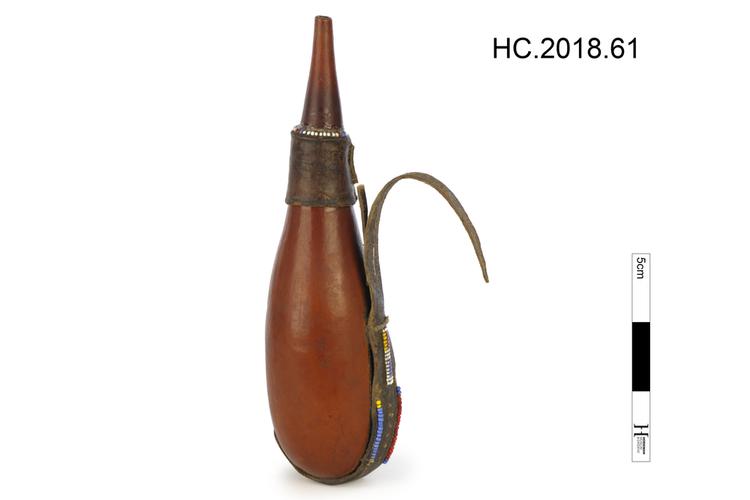
Maasai milk gourd, 'Amala', from Kenya. Leather strap and beadwork decorated gourd used for carrying milk.
Research by 'Rethinking Relationships' project researcher, Ken Simiyu: The object is traditionally known as Amala in Maasai culture. It is traditionally significant because it is used to ferment and preparation milk ready for consumption. Amala was made from a plant related to the pumpkin family. As the fruit mature, it was plugged off the vines and left to dry in an open sunny surface. The inside was then hollowed out using a sharpened curved stick whereby the soft tissues and seeds were removed. It was then washed with ash and herbs and left ready for use. Amalla ranged in sizes from smaller ones for children to huge ones used to serve the whole family. Some were intricately decorated with colourful beads and straps while others were simple and plain. The straps would also be decorated with colourful beads and embossments. The lid is made of decorated leather which makes it hard for the milk to pour. The straps are crucial making it easy to carry the object or hang it strategically in the house. Other objects that may be used alongside it Amala being a food object attracts other objects that are used alongside. For instance there is the stirring stick made from bamboo or coconut branch. The stirring stick ensures the milk maintains a sooth consistence. In the current dispensation where technology is quickly fading out traditional ways of life, this object is on verge of vanishing being replaced by plastics and industrial made sour/yogurt milk. With refrigeration and other food preparations methods in full momentum, tere is little left of this object in particular in urban areas. Though there are many variaions, depending on the creativity of the maker who were mainly women accompanied with young girls between the ages of eight and thirteen. The girls were largely in a training session. The smaller sizes were basically used by young children. There were many decorations ranging from, smoke colorations, embossments, paintings, drawings and incisions. Although the object is on verge disappearance, in the remote local parts of Maaasai it is still used. However, the current version of the object is available for commercial purpose, as tourists take a ways as well as interior home decors and as all hangings. Due to different creative ideas by entrepreneurs the object is available in different materials ranging from metallic, plastics and decorated by different materials colourful beads such as plant beads, metallic beads and even to some extent precious stones such as gold and diamond.



